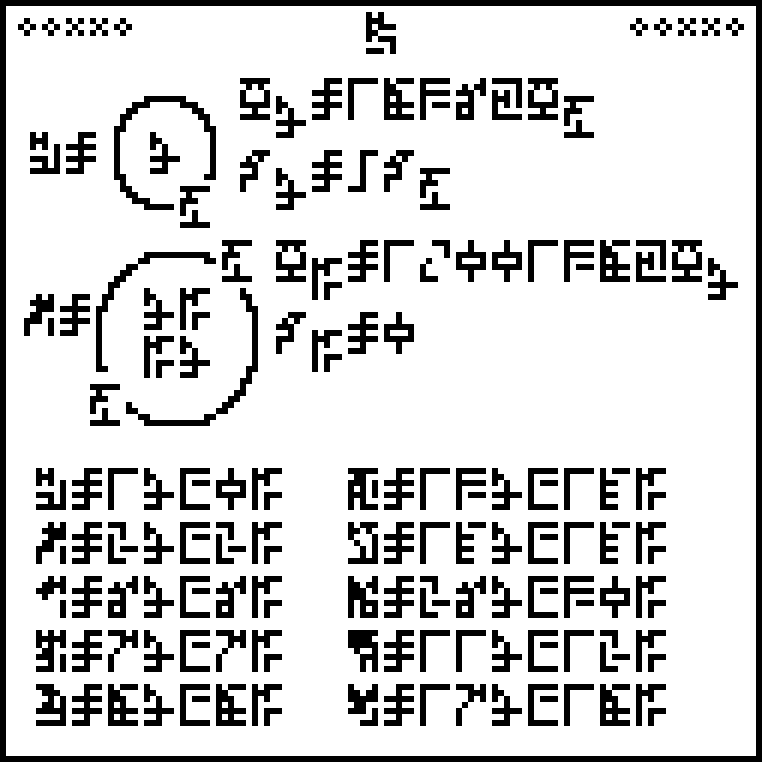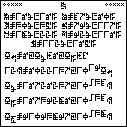Mark Dominus (陶敏修)
mjd@pobox.com

Archive:
| 2025: | JFMAMJ |
| JAS | |
| 2024: | JFMAMJ |
| JASOND | |
| 2023: | JFMAMJ |
| JASOND | |
| 2022: | JFMAMJ |
| JASOND | |
| 2021: | JFMAMJ |
| JASOND | |
| 2020: | JFMAMJ |
| JASOND | |
| 2019: | JFMAMJ |
| JASOND | |
| 2018: | JFMAMJ |
| JASOND | |
| 2017: | JFMAMJ |
| JASOND | |
| 2016: | JFMAMJ |
| JASOND | |
| 2015: | JFMAMJ |
| JASOND | |
| 2014: | JFMAMJ |
| JASOND | |
| 2013: | JFMAMJ |
| JASOND | |
| 2012: | JFMAMJ |
| JASOND | |
| 2011: | JFMAMJ |
| JASOND | |
| 2010: | JFMAMJ |
| JASOND | |
| 2009: | JFMAMJ |
| JASOND | |
| 2008: | JFMAMJ |
| JASOND | |
| 2007: | JFMAMJ |
| JASOND | |
| 2006: | JFMAMJ |
| JASOND | |
| 2005: | OND |
Subtopics:
| Mathematics | 245 |
| Programming | 99 |
| Language | 95 |
| Miscellaneous | 75 |
| Book | 50 |
| Tech | 49 |
| Etymology | 35 |
| Haskell | 33 |
| Oops | 30 |
| Unix | 27 |
| Cosmic Call | 25 |
| Math SE | 25 |
| Law | 22 |
| Physics | 21 |
| Perl | 17 |
| Biology | 16 |
| Brain | 15 |
| Calendar | 15 |
| Food | 15 |
Comments disabled
Fri, 21 Aug 2015
A message to the aliens, part 6/23 (chemistry)
Earlier articles: Introduction Common features Page 1 (numerals) Page 2 (arithmetic) Page 3 (exponents) Page 4 (algebra) Page 5 (geometry)
This is page 6 of the Cosmic Call message. An explanation follows.

The 10 digits again:
 0 |  1 |  2 |  3 |  4 |  5 |  6 |  7 |  8 |  9 |
Page 6 discusses fundamental particles of matter, the structure of the hydrogen and helium atoms, and defines glyphs for the most important chemical elements.
Depicted at top left is the hydrogen atom, with a proton  in the center and
an electron
in the center and
an electron  circulating
around the outside. This diagram is equated to the glyph
circulating
around the outside. This diagram is equated to the glyph  for hydrogen.
for hydrogen.
The diagram for helium  is similar but has two electrons, and its nucleus has two protons and
also two
is similar but has two electrons, and its nucleus has two protons and
also two
 neutrons.
neutrons.
 Proton |  Neutron |  Electron |
The illustrations may puzzle the aliens, depending on how they think of atoms. (Feynman once said that this idea of atoms as little solar systems, with the electrons traveling around the nucleus like planets, was a hundred years old and out of date.) But the accompanying mass and charge data should help clear things up. The first formula says

!!M_p = 1836\cdot M_e!!
the mass of the proton is 1836 times the mass of the electron, and that 1836, independent of the units used and believed to be a universal and fundamental constant, ought to be a dead giveaway about what is being discussed here.
If you want to communicate fundamental constants, you have a bit of a problem. You can't tell the aliens that the speed of light is !!1.8\cdot10^{12}!! furlongs per fortnight without first explaining furlongs and fortnights (as is actually done on a later page). But the proton-electron mass ratio is dimensionless; it's 1836 in every system of units. (Although the value is actually known to be 1836.15267; I don't know why a more accurate value wasn't given.)
This is the first use of subscripts in the document. It also takes
care of introducing the symbol  for mass. The
following formula does the same for charge
for mass. The
following formula does the same for charge  : !!Q_p = -Q_e!!.
: !!Q_p = -Q_e!!.
The next two formulas, accompanying the illustration of the helium
atom, describe the mass (1.00138 protons) and charge (zero) of the
neutron. I wonder why the authors went for the number 1.00138 here
instead of writing the neutron-electron mass ratio of 1838 for
consistency with the previous ratio. I also worry that this won't be
enough for the aliens to be sure about the meaning of  . The 1836 is as
clear as anything can be, but the 0 and -1 of the corresponding charge
ratios could in principle be a lot of other things. Will the context
be enough to make clear what is being discussed? I suppose it has to; charge, unlike mass, comes in discrete units and there is nothing like the 1836.
. The 1836 is as
clear as anything can be, but the 0 and -1 of the corresponding charge
ratios could in principle be a lot of other things. Will the context
be enough to make clear what is being discussed? I suppose it has to; charge, unlike mass, comes in discrete units and there is nothing like the 1836.
The second half of the page reiterates the symbols for hydrogen and
helium and defines symbols for eight other chemical elements. Some of
these appear in organic compounds that will be discussed later; others
are important constituents of the Earth. It also
introduces symbol for “union” or “and”:  . For example,
sodium is described as having 11 protons and 12 neutrons.
. For example,
sodium is described as having 11 protons and 12 neutrons.
 Hydrogen |  Helium |  Carbon |  Nitrogen |  Oxygen |  Aluminium | Silicon |  Iron |  Sodium |  Chlorine |
Most of these new glyphs are not especially mnemonic, except for hydrogen—and aluminium, which is spectacular.
The blog is going on hiatus until early September. When it returns, the next article will discuss page 7, shown at right. It has three errors. Can you find them? (Click to enlarge.)[Other articles in category /aliens/dd] permanent link



